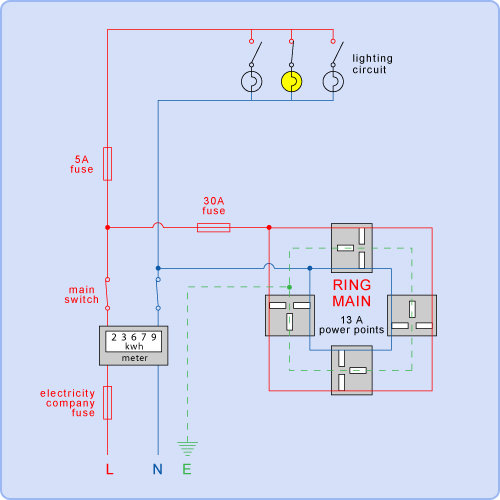Mains Electricity
Mains electricity is the term used to refer to the electricity supply from power stations to households.
Mains electricity is supplied as alternating current (a.c.)
Alternating current a.c. is one which is constantly changing i.e. the current flows in one direction and then in the opposite direction, again and again (continuously). In the UK, a.c. supply goes in one direction and then in the opposite direction 50 times in one second.
Therefore, the frequency of a.c. supply is 50 cycles per second or 50 hertz.
UK mains voltage is 230 Volts.
Why a.c.?
Alternating current can easily be converted to higher and lower voltages by a transformer. By transporting the electrical energy from a power station at a high voltage and low current is more efficient as if a high current and low voltage was to be used most of the energy would be wasted as heat due to the resistance in the power lines. Converting d.c. to the high voltage low current form is very difficult and cannot be done efficiently.
Mains electricity generated from power stations is supplied to UK households via the National Grid.

Mains electricity (electricity from the power station) enters the house via the Live wire. The live wire carries the incoming electricity and is therefore at 230V and so very dangerous. Mains voltage is more than enough to kill somebody.
The neutral wire is also supplied from the power station and is used to complete the circuit. it is earthed back to the power station. Therefore once the electricity from the live wire has given its energy to the appliances in the household the current travels back out of the house via the neutral wire – hence the neutral wire has a lower voltage than the live wire.
The earth wire is used for safety purposes and carries the current away when there is a fault.
